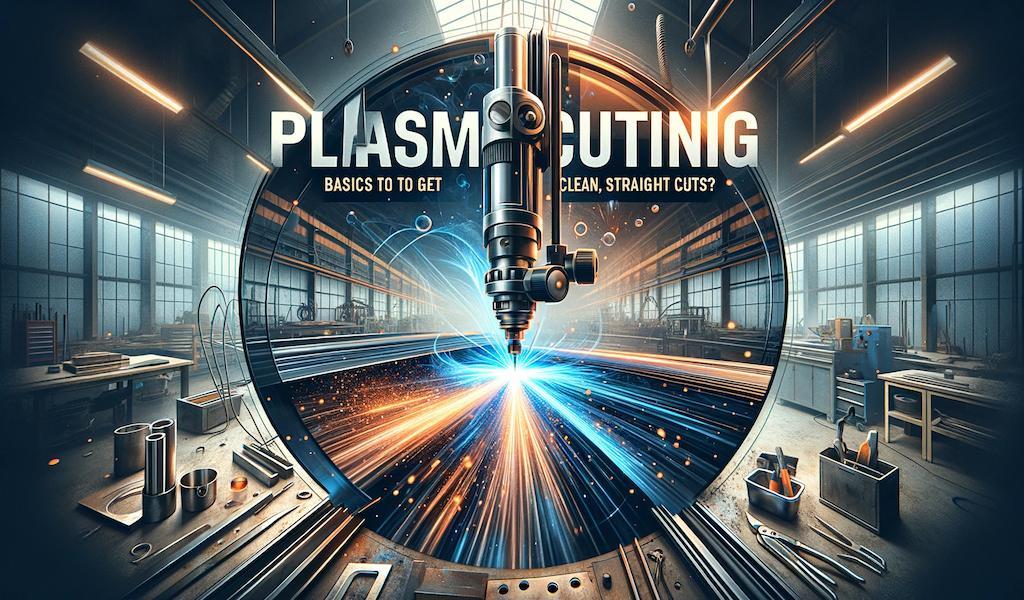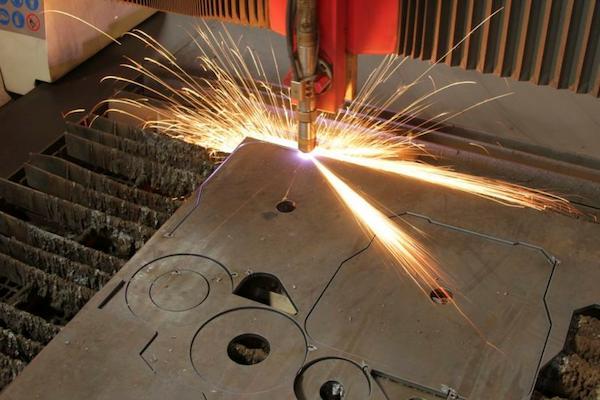Plasma cutting is a widely used process in metal fabrication. It is renowned for its precision and efficiency. This technique harnesses the power of a plasma torch to cut through various metals and alloys. Next, plasma-cutting is favorable for both industrial and artistic applications.
Let’s break down how to achieve clean and straight cuts with the plasma cutter.
What is Plasma Cutting?
Let’s start with what is plasma cutting. It is a formidable metal cutting technique, particularly favored for its speed and versatility. At its core, it involves using a plasma torch to cut through different metal workpieces. The process begins by sending an electric arc through a gas that passes through a constricted opening. This interaction transforms the gas into plasma, a highly energized state of matter that effortlessly slices through metal. This method is incredibly efficient for industrial and artistic applications, offering precision that rivals traditional methods.
You could be confused with laser cutting, another similar metal-cutting technique using a laser beam. However, comparing laser cutting vs. plasma Cutting, plasma is particularly advantageous for its compatibility with a broad range of materials and thicknesses. In contrast, the laser is known for its ultra-precise cuts, especially in thinner materials.
Furthermore, the demand for professional Plasma Cutting Services has grown, reflecting the technique’s adaptability and efficiency. These services offer specialized expertise and equipment to deliver high-quality cuts for custom projects. Companies like Prolean can produce intricate designs and precise cuts on various metal thicknesses and types.
Choose the Right Materials
The success of plasma cutting significantly depends on selecting the right materials. The materials commonly used include steel, aluminum, and copper, each offering unique challenges and benefits.
For instance, Steel is a popular choice due to its strength and durability in heavy-duty applications. On the other hand, Aluminum is lighter and conducts heat quickly, requiring careful control of the cutting speed to prevent warping.
Next, copper is known for its conductivity and can be more challenging to cut due to its thickness and propensity to reflect heat. It’s essential to understand the properties of these materials to adjust the cutting process accordingly.
Set the Optimal Laser-cutting Parameters
Metals like steel, aluminum, and copper each react differently under a laser beam. Steel, known for its resilience, requires higher power settings for a clean cut, while aluminum, being lighter and more heat-conductive, demands careful balancing of speed and power to avoid warping. The material’s thickness also plays a crucial role, with thicker metals needing more power and slower cutting speeds.
Adhering to the required specifications is equally essential when setting laser cutting parameters. It involves precision in various aspects, such as cutting speed, power, frequency, and focus. The key is to achieve the desired cut quality, be it a smooth edge for aesthetic purposes or a rougher cut for industrial use.
Consequently, lower speeds and higher precision are essential for intricate designs, whereas high-speed cutting is for simpler, large parts. Adjusting these parameters according to the specific design and application ensures clean & straight cuts and efficient material usage.
Properly Set Up Your Workspace
Creating an optimal workspace is critical for effective plasma cutting. Six primary considerations are essential:
- Ensure a Clean, Flat Surface: Create a stable base for cutting by cleaning and flattening the surface to prevent metal movement and ensure accurate cuts.
- Maintain Adequate Ventilation: Set up proper ventilation to remove harmful fumes and smoke, ensuring a safe and clean working environment during cutting.
- Secure the Metal Firmly: Use clamps or weights to hold the metal in place, preventing shifting or vibrating which can lead to imprecise cuts.
- Organize Tools and Equipment Efficiently: Arrange all necessary tools, including the plasma cutter and safety gear, within easy reach to streamline the cutting process.
- Check Connections and Settings Thoroughly: Before starting, verify all connections to the plasma cutter and air compressor, and adjust settings for the specific material and thickness.
- Establish a Safety Zone Around the Workspace: Designate a clear, safe area around the cutting space, free from flammable materials and unnecessary personnel, to minimize the risk of accidents.
Advanced Clean and Straight Plasma Cutting Strategies
Dealing with Thick Materials
Plasma cutting’s versatility extends to its ability to handle thick materials. However, this task requires specific strategies for clean and straight cuts. The primary challenge with thicker materials is ensuring the plasma jet penetrates entirely through the workpiece.
As a result, it necessitates an adjustment in power settings. Higher power settings increase the plasma arc’s intensity, allowing it to cut through substantial thicknesses effectively.
Alongside power adjustments, the speed of the cut plays a crucial role. Thick materials require slower passes. This slower pace allows the plasma arc to fully penetrate the material for a clean cut all the way through. Rushing the process can result in incomplete cuts, where the bottom of the material is not as cleanly cut as the top, or worse.
Moreover, when dealing with thick materials, attention must be paid to the angle of the cut and the distance between the torch and the material. Even slight deviations can significantly affect the quality of the cut. Here, a consistent angle and an optimal standoff distance determine the focus and intensity of the plasma arc on the material.
Creating Complex Shapes
Creating complex shapes with plasma cutting requires a blend of precision, creativity, and patience. The use of templates is an excellent strategy in this aspect. Templates can be made with a variety of materials like metal, wood, or even durable plastic.
The template guides the plasma torch to follow a predetermined path. It is particularly useful for intricate designs that require high precision.
Templates ensure repeatability and uniformity in cuts, which is vital in projects involving multiple pieces of the same design.
However, before diving into the final piece, practicing on scrap material is highly recommended. This step is crucial, especially for complex designs, as it allows you to fine-tune your technique and adjust the settings of your plasma cutter.
SEE ALSO: How To Properly Apply Sunscreen To Safeguard Your Skin From Harmful UV Rays
⚠ Article Disclaimer
The above article is sponsored content any opinions expressed in this article are those of the author and not necessarily reflect the views of CTN News







